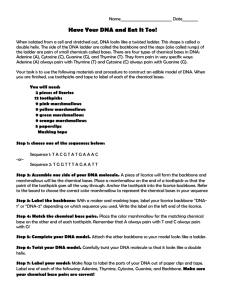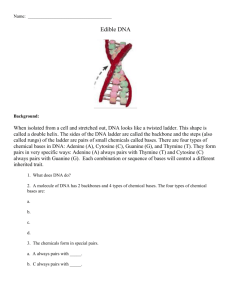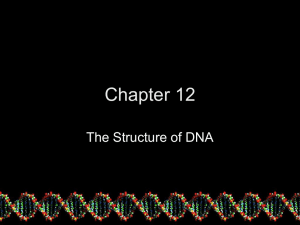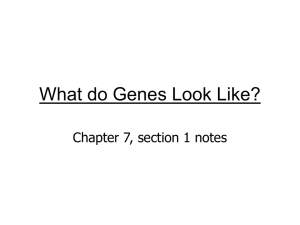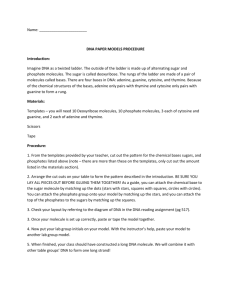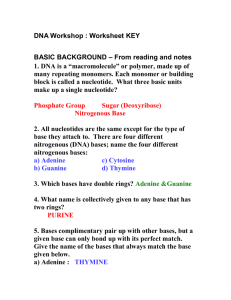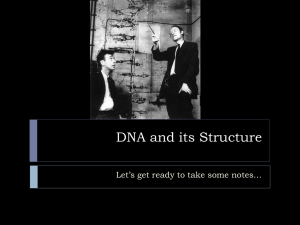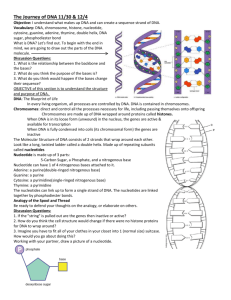Have Your DNA And Eat It Too!
advertisement
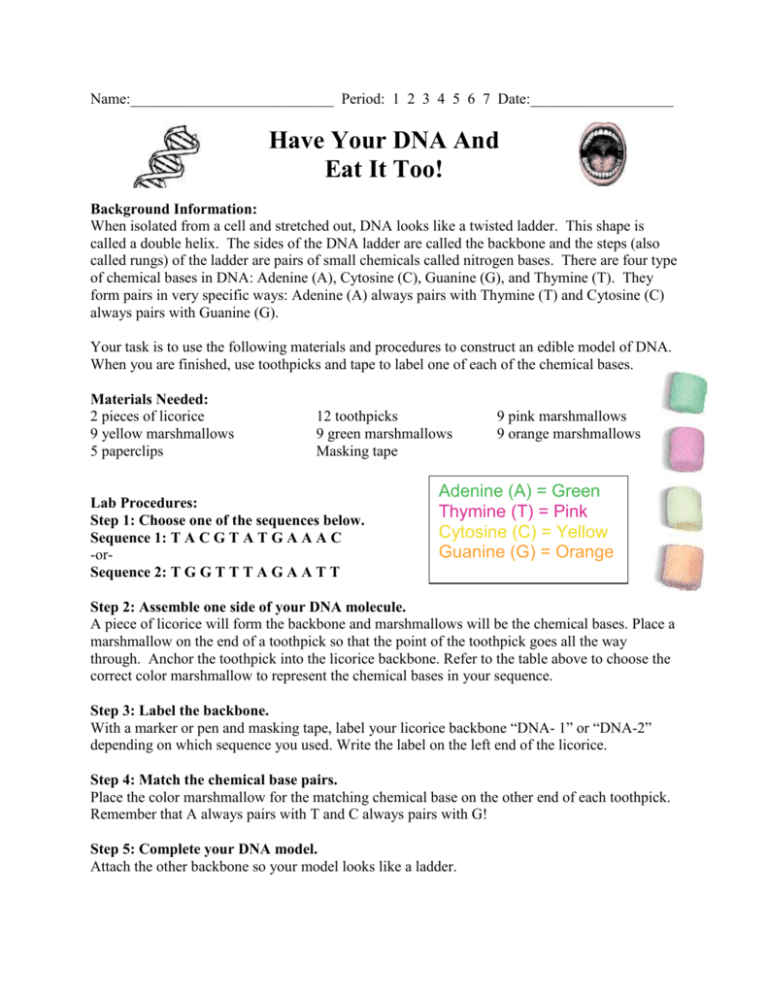
Name:___________________________ Period: 1 2 3 4 5 6 7 Date:___________________ Have Your DNA And Eat It Too! Background Information: When isolated from a cell and stretched out, DNA looks like a twisted ladder. This shape is called a double helix. The sides of the DNA ladder are called the backbone and the steps (also called rungs) of the ladder are pairs of small chemicals called nitrogen bases. There are four type of chemical bases in DNA: Adenine (A), Cytosine (C), Guanine (G), and Thymine (T). They form pairs in very specific ways: Adenine (A) always pairs with Thymine (T) and Cytosine (C) always pairs with Guanine (G). Your task is to use the following materials and procedures to construct an edible model of DNA. When you are finished, use toothpicks and tape to label one of each of the chemical bases. Materials Needed: 2 pieces of licorice 9 yellow marshmallows 5 paperclips 12 toothpicks 9 green marshmallows Masking tape Lab Procedures: Step 1: Choose one of the sequences below. Sequence 1: T A C G T A T G A A A C -orSequence 2: T G G T T T A G A A T T 9 pink marshmallows 9 orange marshmallows Adenine (A) = Green Thymine (T) = Pink Cytosine (C) = Yellow Guanine (G) = Orange Step 2: Assemble one side of your DNA molecule. A piece of licorice will form the backbone and marshmallows will be the chemical bases. Place a marshmallow on the end of a toothpick so that the point of the toothpick goes all the way through. Anchor the toothpick into the licorice backbone. Refer to the table above to choose the correct color marshmallow to represent the chemical bases in your sequence. Step 3: Label the backbone. With a marker or pen and masking tape, label your licorice backbone “DNA- 1” or “DNA-2” depending on which sequence you used. Write the label on the left end of the licorice. Step 4: Match the chemical base pairs. Place the color marshmallow for the matching chemical base on the other end of each toothpick. Remember that A always pairs with T and C always pairs with G! Step 5: Complete your DNA model. Attach the other backbone so your model looks like a ladder. Step 6: Twist your DNA model. Carefully twist your DNA molecule so that it looks like a double helix. Step 7: Label your model. Make flags to label the parts of your DNA out of paper clips and tape. Label one of each of the following: Adenine, Thymine, Cytosine, Guanine, and Backbone. Make sure your chemical base pairs are correct! Step 8: Teacher Check Off Have your teacher check off your DNA model and sign here __________________. Step 9: EAT YOUR PROJECT!!!!!!!!! Self-explanatory. Watch out for the toothpicks. : ) Additional Information: Within every one of your cells you have around 3.2 billion base pairs (nitrogen bases) that make up your DNA. These base pairs are like a code book for your body they tell your cells what types of proteins they need to make. These protein molecules are the building materials for cells. Once cells are constructed they form tissues, then tissues form organs, then organs form organ systems, and eventually organ systems form an organism. So behind the entire construction of a human being or any organism is DNA it is the blueprint of life. Follow Up Activity: On another piece of paper you need to create an empty crossword puzzle. This crossword puzzle needs to include clues at the bottom and empty spaces for letters. You need to include 10-15 different words learned in our genetics and heredity unit. Examples of words that you should consider using would be DNA, chromosomes, adenine, guanine, cytosine, adenine, genetics, heredity, traits, double helix, proteins, etc. You may also choose to include additional words that we have used in class this year. Once you have completed your crossword puzzle you will share it with someone else in class and have them see if they can complete your crossword puzzle.
